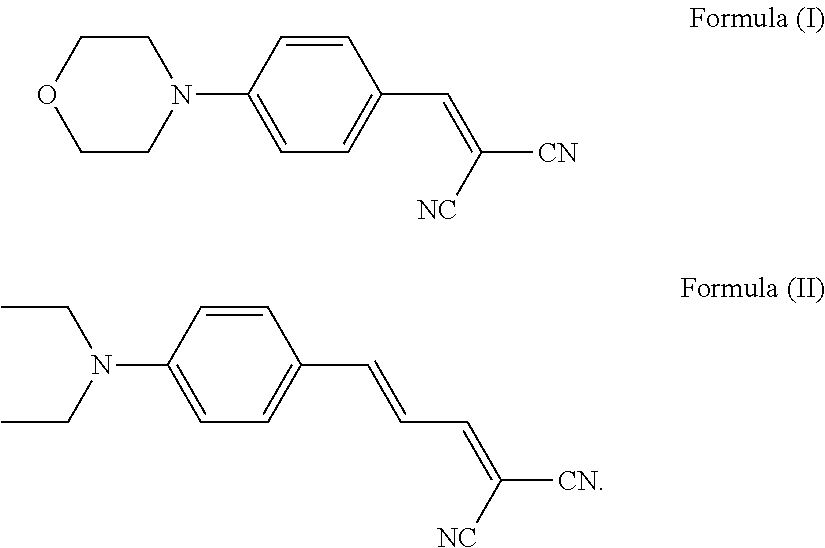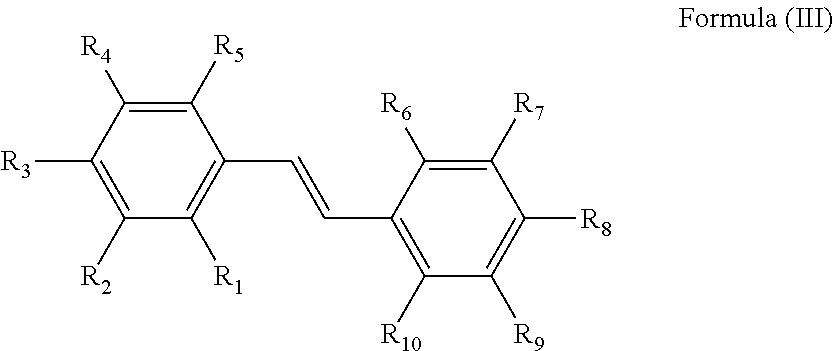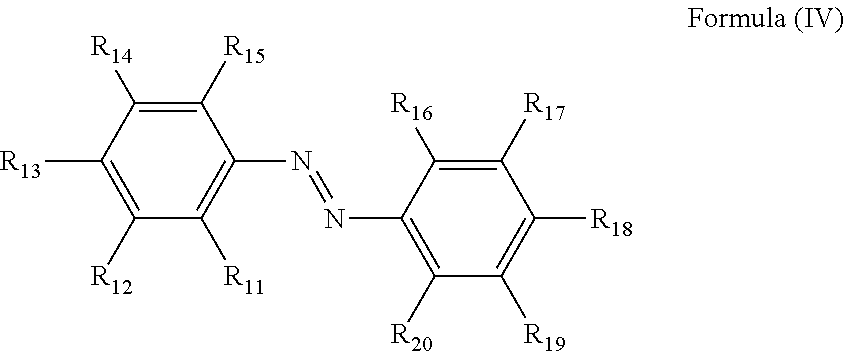Methods of altering the refractive index of materials
a refractive index and material technology, applied in the field of methods of altering the refractive index of materials, can solve the problems of difficult control of the thickness change in the adjacent region, eye can suffer from several different defects that affect vision,
- Summary
- Abstract
- Description
- Claims
- Application Information
AI Technical Summary
Benefits of technology
Problems solved by technology
Method used
Image
Examples
example 1
[0117]A solution of 37.5% SARTOMER CN990, 59.4% SARTOMER SR344 and 3.1% DAROCUR 4265 was created (composition was based on weight fraction of the components). SARTOMER CN990 is a siliconized urethane acrylate oligomer. SARTOMER SR344 is a polyethylene glycol diacrylate having a molecular weight of 508. DAROCUR 4265 is a photoinitiator mixture of 50 weight percent diphenyl (2,4,6-trimethylbenzoyl) phosphine oxide and 50 weight percent 2-hydroxy-2-methyl-1-phenyl-1-propanone. DAROCUR 4265 has absorption peaks at 240, 272, and 380 nm in methanol.
[0118]The refractive index of the solution was measured to be 1.4717. The solution was then cast onto a slide and exposed to 10 seconds of UV light from a lamp source. The refractive index of the film was then measured using a Metricon Model 2010 Prism Coupler, and was determined to be 1.4747. Additional UV exposure of 5 seconds gave a refractive index of n=1.4852. Further UV exposure of 15 seconds gave a refractive index of n=1.4868. In other ...
example 2
[0119]The solution of Example 1 was again created, except the DAROCUR 4265 was replaced with IRGACURE 2959, which is sensitive to 254 nm UV. The solution was cast onto a plate and exposed to UV light. After 2 seconds exposure, the refractive index was measured with the prism coupler and found to be n=1.4668, with the film not being fully cured in the center. An additional 5 second UV exposure led to the refractive index being measured as n=1.485.
example 3
[0120]A third experiment was performed to better evaluate the exposure-dependence of the refractive index. A solution similar to that of Example 1 was prepared and cast onto a slide. The film then underwent several cycles of UV exposure and refractive index measurement. The results are shown in FIG. 12. Below 8 seconds exposure, the film was not fully set. The data is also summarized in Table 1.
TABLE 1Time (sec)Refractive Index81.4799101.4804151.4835201.4887251.489
[0121]The results indicated that the refractive index could be changed by a range of about 0.01 after exposure of about 25 seconds. This value of index change was selected as providing approximately a 10% change in lens power (as shown in FIG. 2).
PUM
| Property | Measurement | Unit |
|---|---|---|
| Refractive index | aaaaa | aaaaa |
| Solubility parameter | aaaaa | aaaaa |
Abstract
Description
Claims
Application Information
 Login to View More
Login to View More - R&D Engineer
- R&D Manager
- IP Professional
- Industry Leading Data Capabilities
- Powerful AI technology
- Patent DNA Extraction
Browse by: Latest US Patents, China's latest patents, Technical Efficacy Thesaurus, Application Domain, Technology Topic, Popular Technical Reports.
© 2024 PatSnap. All rights reserved.Legal|Privacy policy|Modern Slavery Act Transparency Statement|Sitemap|About US| Contact US: help@patsnap.com










